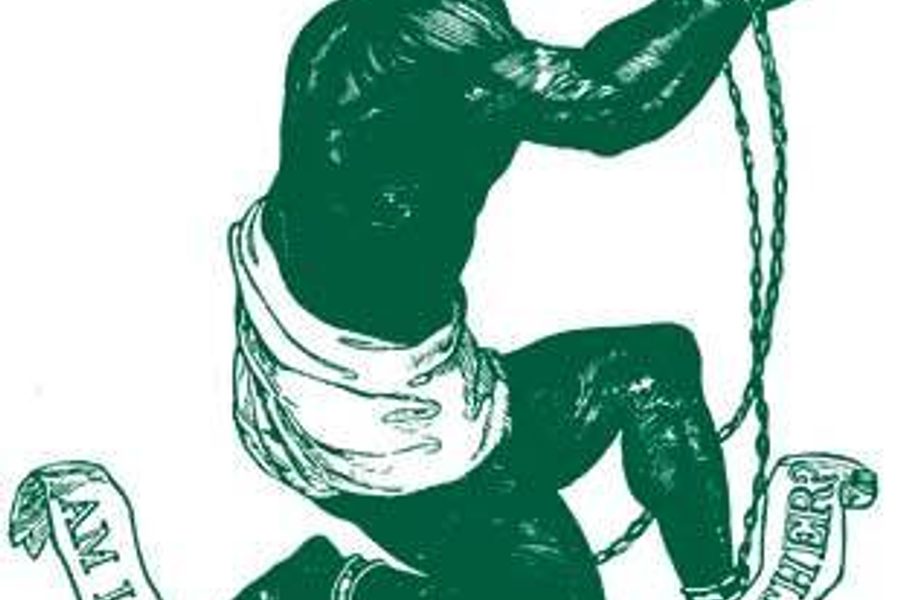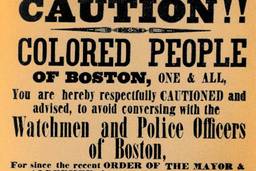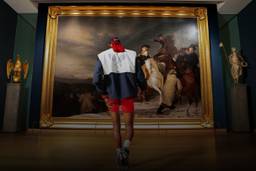
Race facilitates rule. If race did not exist, the powers-that-be would have had to invent it, for an ordered, hierarchical society requires an Other, preferably physically distinct from Us.
The Other serves many purposes, sometimes providing a disposable work force.
In the 16th century, the Catholic Church in cahoots with the Spanish throne defended the enslavement of Native Americans by denying they were human. When the natives began dying off in droves, leaving a potential labor shortage, the Church threw its weight behind African slavery. Africans were presumed to be both subhuman and exceptionally hardy, well suited for the wear and tear of slavery in the New World.
African blood became a prerequisite to slavery. The powerful proudly proclaimed slavery good for blacks, a conviction that informed the “black codes” of the mid-19th century South. John Bailey’s The Lost German Slave Girl exhumes and examines some of the laws that both created and crushed the Other. While a slave could be raffled off or wagered at the master’s whim, freeing a slave was fraught with legal obstacles. In Louisiana, anyone could halt the manumission process by alleging the slave’s bad conduct. Indeed, freed slave was such a threat to the social order that the former master had to post a thousand dollar bond to guarantee the ex-slave’s immediate exit from the state.
Bailey tells the fascinating true tale of Sally Miller, a New Orleans slave who in 1843 was suddenly “discovered” to be white. Blacks could not sue whites, but Miller sued her owner for damages in order to gain the freedom that would automatically follow a court’s acceptance of her as a white woman.
Was Sally white? The question had no objective answer. A parade of distinguished citizens, whom she’d served as a slave, swore she wasn’t — but as her lawyer repeatedly pointed out, they’d assumed she was black because she was being treated as a slave. Compounding their subjectivity was their demonization of her as Other, a strategy that conveniently masked the worst impulses of Us. A key question at the trial was whether Sally had given birth to her son Lafayette at the age of 10 — for presumably, no white girl could have gotten knocked up at so indecently early an age, and it was understood that even the youngest black girl could seduce a white man.
Up North, free blacks remained the Other, though legally maintained oppression took the more subtle form of opportunity denied. In Sarah’s Long Walk, Stephen and Paul Kendrick’s earnest account of the mid-19th century fight to desegregate Boston’s public schools, the authors describe a valiant free black community under siege from poverty and prejudice. Black integrationists became dogged activists: petitioning, boycotting and even suing, deploying black lawyer Robert Morris in partnership with future senator Charles Sumner. They lost — and the state’s top court came forth with a rousing endorsement of “separate but equal” schools.
Boston’s black activists were so trapped by the larger society that the story of their efforts has all the drama of fireflies trying to escape from a jar. The book doesn’t get exciting until the Fugitive Slave Law essentially busts the jar open, finally giving the black community white allies with clout. Ultimately, the tumultuous times swept an entire slate of Know-Nothings into the state legislature — and in 1855, they voted to desegregate the Boston schools. The pendulum swung forward, breaking down the racialized legal fiction of Other versus Us.
Today, the pendulum swings back. Fox News commentator Michelle Malkin’s recent book, In Defense of Internment: The Case for Racial Profiling in World War II and the War on Terror, calls on Us to lock up the Other. Malkin claims that mass ethnic detentions are a prudent response to espionage and terror plots, as if securing a haystack automatically serves to pinpoint a needle. Her guilty-until-proven-innocent approach equates color with criminality and obstructs effective law enforcement. Only in the movies does badass bullying expose conspiracies rather than recruit new conspirators to the cause. Dragnets can’t substitute for field operatives and translators.
Most importantly, Malkin’s sleazy tract shows how readily our laws and law officials become instruments of evil. The “black codes” and segregation laws of yesteryear were not the freak consequences of unenlightened times — they were the ordinary outcomes of those in power protecting their self-interest through division and despotism. If we dismiss these laws as rogue jurisprudence with no contemporary relevance, we are the rogues, oblivious to our complicity in racism.








